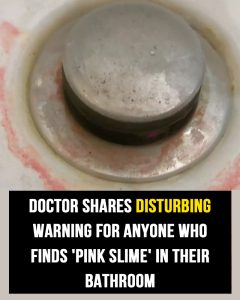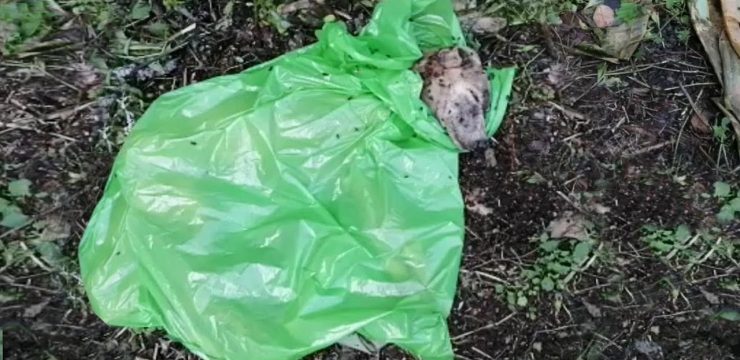Many people have noticed a mysterious pink residue forming around drains, shower curtains, and tile grout in their bathrooms. At first glance, it’s easy to assume this discoloration is mold. However, what looks like mold is actually something entirely different—it’s caused by a bacterium called Serratia marcescens.
This bacterium thrives in moist environments, especially those commonly found in bathrooms. What makes it particularly persistent is its ability to feed on fatty substances left behind by soap, shampoo, and other personal care products. Over time, these residues provide an ideal food source, allowing the bacteria to grow and produce a distinct pink or reddish pigment known as prodigiosin.

Dr. Karan Raj, a surgeon with the UK’s National Health Service (NHS), has drawn attention to this issue through social media and public health education. He explains, “If you’ve seen this pink slime lurking in your bathroom, it’s not mold—it’s bacteria.” According to Dr. Raj, Serratia marcescens “loves damp, moist places, and enjoys munching on fatty deposits like those found in soaps and shampoos; hence why it likes to hang out in your bathroom.”
While it’s easy to shrug off this pink slime as a harmless inconvenience, it’s important to understand the potential health implications. For most healthy individuals, contact with Serratia marcescens is generally not dangerous. However, for certain groups—especially those with weakened immune systems—the risks can be more serious.
Medical experts, including those from Infectious Disease Advisor, report that Serratia marcescens is commonly found in soil, water, plants, and animals. In home environments, particularly in bathrooms, it settles in damp corners of showers, sinks, and other wet areas, where it becomes visible thanks to its telltale pink hue. In healthcare settings, where people may already be vulnerable due to illness or injury, this bacterium can be problematic, leading to infections in the urinary tract, respiratory system, or even in open wounds.
These infections are especially concerning because Serratia marcescens is known to be resistant to multiple types of antibiotics. This resistance can make infections difficult to treat and potentially more dangerous for those affected. For this reason, Dr. Raj advises caution when dealing with pink slime in the bathroom. “You still want to avoid getting it in your eyes or open wounds,” he warns.
Moreover, the constant presence of dampness in bathrooms not only fosters the growth of Serratia marcescens but also invites other potentially harmful microorganisms. One of the most serious is black mold, which can cause severe respiratory issues, especially in people with asthma, allergies, or other respiratory conditions. Dr. Raj emphasizes that maintaining a clean and dry bathroom isn’t just about aesthetics—it’s a matter of protecting your health.
So, what can homeowners do to prevent the spread of Serratia marcescens and other bathroom bacteria? There are several effective measures that can significantly reduce the risk:
First, ensure proper ventilation in your bathroom. Moisture is the enemy when it comes to bacterial and mold growth, so it’s essential to keep the air moving. Use an exhaust fan during and after showers, or open a window to allow humid air to escape. Reducing humidity levels makes it harder for Serratia marcescens to thrive.
Second, regular cleaning is key. Focus on cleaning bathroom surfaces that tend to stay damp—like tile grout, around sinks, and on shower curtains. Use disinfectants containing bleach or hydrogen peroxide, which are effective at killing bacteria. Make it a routine to wipe down these areas, especially if you notice pink staining starting to appear.
Next, address leaks immediately. A leaky faucet, pipe, or showerhead can create a constant source of moisture, perfect for bacteria to grow. Fixing these problems promptly not only conserves water but also helps maintain a healthier bathroom environment.
Additionally, reduce clutter in your shower area. The more bottles, sponges, and containers you have, the more surfaces there are for bacteria to latch onto. Try to keep only the essentials in the shower and clean them regularly to prevent buildup.
Dr. Raj’s message about bathroom hygiene has resonated widely, especially through platforms like TikTok, where he’s gained attention for his educational and often humorous posts. In one post, he playfully refers to the “pink slime club,” joking about the common but misunderstood presence of this bacteria in so many homes.
Ultimately, by following a few simple practices, homeowners can greatly reduce the risk of Serratia marcescens and other harmful organisms taking hold in their bathrooms. The take-away? That pink residue you see in your shower or around the sink is not mold, but Serratia marcescens, a bacterium that flourishes in moist, soapy environments. For most people, it poses minimal risk, but for those with compromised immune systems, it can lead to more serious health problems, especially when it finds its way into wounds or the respiratory system.
Maintaining a clean and dry bathroom is the best way to prevent bacterial and mold growth. Ventilation, regular disinfection, prompt repairs, and minimizing clutter are all simple yet powerful ways to safeguard your home. Awareness is half the battle—now that you know what causes that pink slime and the potential dangers it carries, you’re better equipped to take action.
So, did you know about the potential dangers of pink slime before reading this? Share this information with friends and family to help them stay safe and healthy too. Keeping your bathroom clean doesn’t just make it look better—it protects the people you care about.





